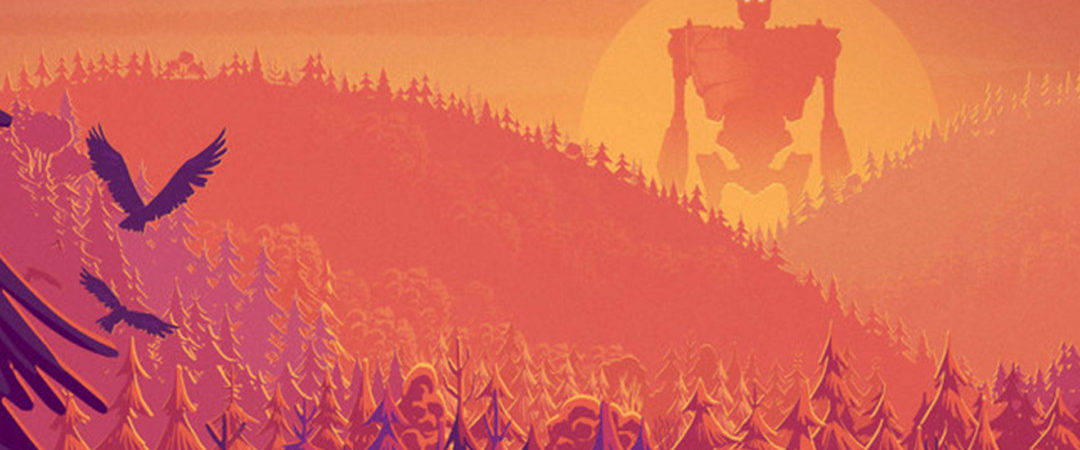
Ireland based illustrator Matt Griffin‘s portfolio is deep with science-fiction, a touch of fantasy, and a focus on delivering one hundred percent mood. With his illustration work in film, Griffin heightens the atmosphere set within the movie, those unnamed feelings given visual representation. He can convey an entire narrative without showing the specific players, depicting the story using an accurate dose of color and texture within a single bold image.
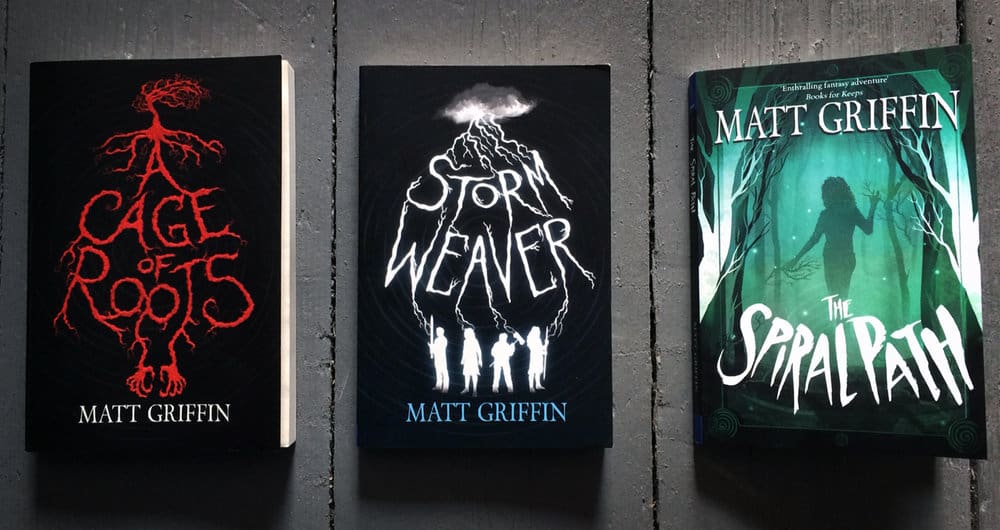
The Ayla Trilogy of books written by Matt Griffin.
CJ: Outside of your illustration work you have three published novels, each of which you did the cover art for. A Cage of Roots, Storm Weaver, and The Spiral Path make up your Ayla Trilogy. Was there a lengthy process on each of the covers with publisher O’Brien Press?
MG: Well, naming the books was the hardest part for me. I don’t why that is – maybe it’s so important and final that I struggled to make a decision. But publishers are there to help in this regard – they’re the experts after all. The first book, A Cage of Roots, was originally named Aela & The Red Root King. But this thing of ‘protagonist-and-the-something-something’ has already been done with some success by JK Rowling, so it’s a thing to avoid. Also the spelling of the protagonist’s name had to change to be more phonetical for non-Irish readers.
Publishers are similarly knowledgable about covers of course. I had done a mock cover in the original pitch with red roots forming the lettering and the art director, Emma Byrne, liked it so we developed that concept for Cage of Roots. We stuck with the template for the follow-up, Storm Weaver, but for the third they wanted to change it for marketing reasons. They felt maybe the others were a little too scary and dark (being nearly all black) and off-putting to parents/young readers. The books are aimed at 10+ and sometimes I forget how scary I can make things, so we changed tack. As a designer, I’d be lying if I said the fact that the three aren’t in a set doesn’t bother me, but I bow to the better wisdom of people who actually know how to sell books! These days I work on a lot of book covers, and the length for each one varies wildly and depends on so many factors. An art director might love it but their marketing team might not, so you have to compromise.
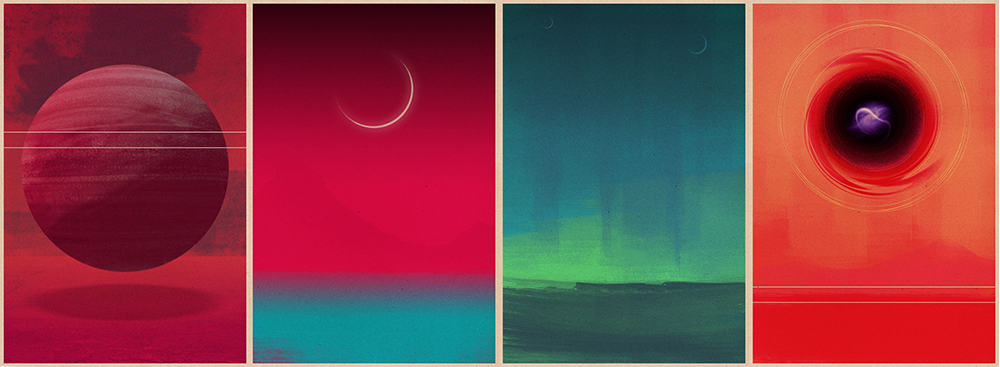
‘Other Seas / Other Suns 1-4’ by Matt Griffin
Your Other Seas / Other Suns series reminds me of early 1900s depictions of space – something imagined by Edgar Rice Burroughs seen through the lens of Mark Rothko. I love your representation of space – it doesn’t focus on the exact science of it, but the pure beauty of imagining the unknown and the unseen. You went for the feeling of the unknown planets rather than the exact truth of them. What was the overall plan for that project?
No one has hit the nail on the head better than you in regard to these pieces. They were absolutely inspired by Rothko and philosophical sci-fi. And it’s ALL about imagining the unknown and unseen. They are totally intended as the feeling rather than a description of a new, strange world. As for a plan, there was none, originally. I tend to make personal stuff off the cuff. I spend a lot of time pondering space-related things and I wanted to play around with visually representing these little sci-fi dreams I have.
I’ve expanded that a little in making music along the same themes. It’s just for fun, but the dream goal is an exhibition of the art, some animation, and the music. I’d love to make an experience of it all, not unlike going to see a Rothko show, if he was filtering Burroughs / Lem / Asimov and included lights, animations and maybe sculptures. It’s kind of the long-form dream project. Maybe someday.
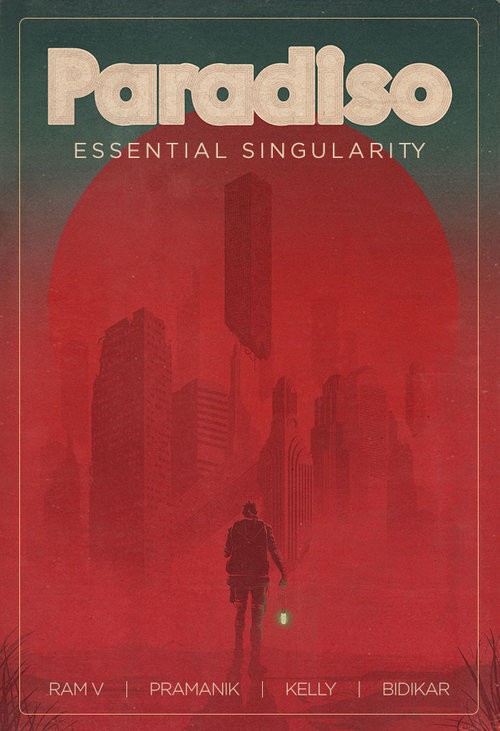
‘Paradiso’ by Matt Griffin
Your work has such a painterly touch to it. Have you been a digital artist from the start, or were you ever a traditional painter?
I did attend art college for a year, where I wanted to learn to be a painter. I definitely thought of myself as a potential fine artist rather than a commercial one. I didn’t know what a commercial artist was! I also, as it turned out, didn’t know what a fine artist was. I didn’t take to it, partied too much, wasted everyone’s time and dropped out after a year. I think I was just too young (even though I was 21-22) and I am someone who always likes to plough his own furrow (driving teachers and parents crazy), but despite that failure, something must have stuck because I definitely try to keep a painterly quality to my work and I’m glad that comes through. Also there is no cmd-z in paint.
Your sketches are incredibly rough – are those getting scanned in to work from at all, or are you completely redrawing everything in Photoshop?
I used to scan preliminary work and finish in Photoshop but the iPad Pro took away the need to do that. I also like the options I have by working digitally from the start, although it has meant I’ve lost practice in drawing on paper. So I often take to my sketchbook to draw something with great detail and then stop after 2.5 seconds. I do a lot of type and texture-making on paper, but drawing figures or anything in great detail is something I need to do more of, so I don’t lose the ability completely.
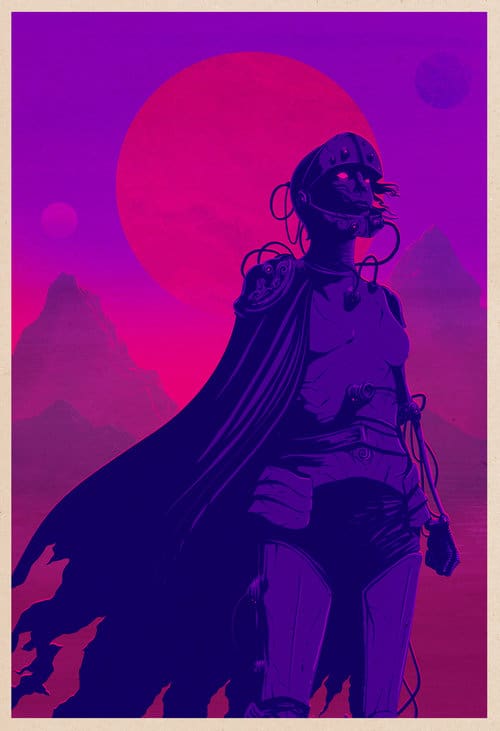
‘Desert Knight’ by Matt Griffin
Your illustrations are built through color and texture – you don’t draw key line work and then color that.
Abandoning line-work was a conscious decision from a style point of view. I used to draw everything in line-work, and the colour behind it, often re-colouring the lines too. But I preferred the look of art with no lines so I changed. But, I may well go back to line work if I think it will look cool.
Do you have the color palette set from the start, or are you changing them constantly?
Sometimes I have a palette chosen from the start (like in my Iron Giant art) but more often, it’s all about play time. I mess around with all kinds of layer blends until I think it looks good. It’s very experimental, but I prefer working that way I think. I like bold colour choices in my work, certainly.
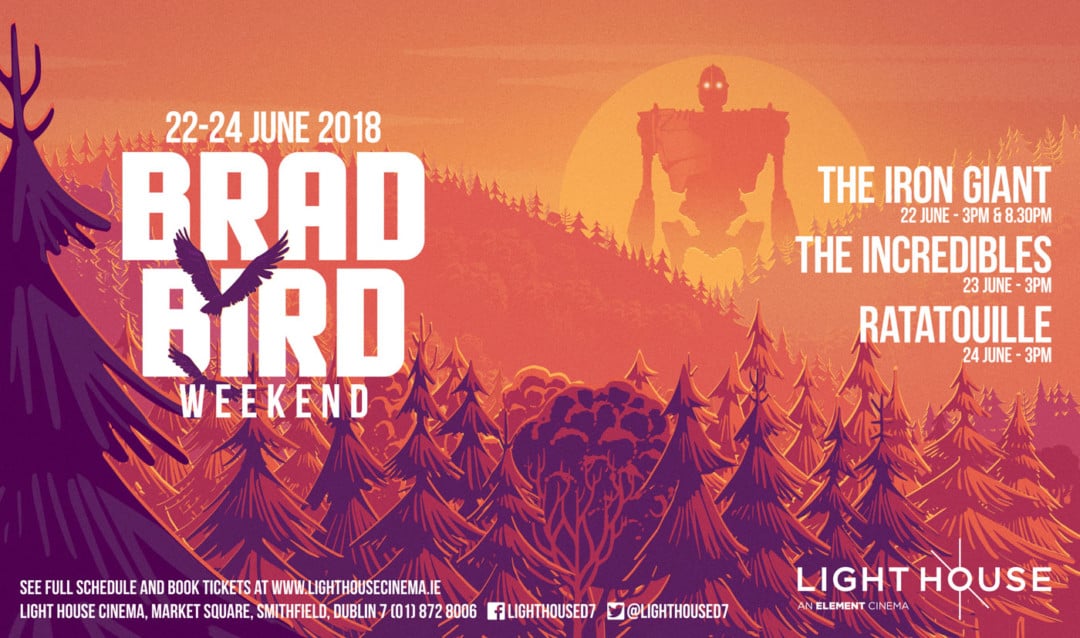
Illustration for Brad Bird Season for Light House Cinema by Matt Griffin
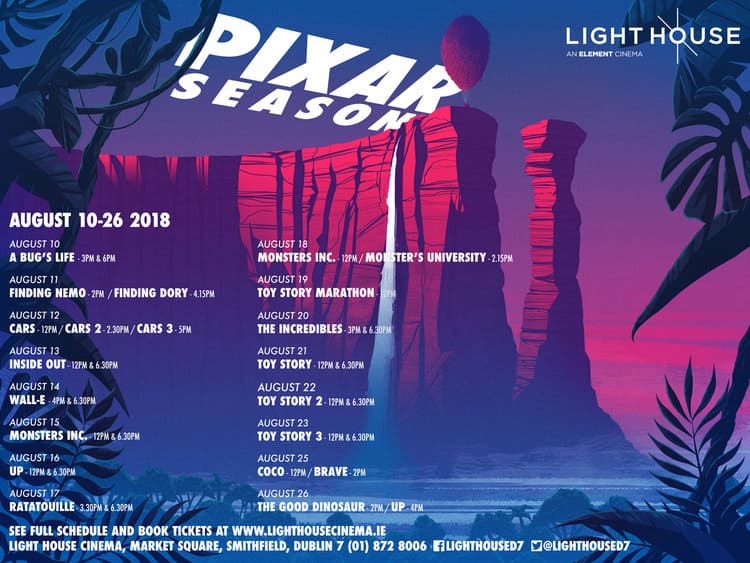
Illustration for Pixar Season for Light House Cinema by Matt Griffin
That Iron Giant piece is massive, I saw they used it as a backdrop at the theatre. Out of all of Bird’s films, The Iron Giant works really well with your style and at the size it was going to be printed. Was the use of The Iron Giant your choice, or was that picked by the client? If it was for a DVD cover of the film, would you have gone a different route?
Yeah, that was a great job and resulted in me meeting the man himself which was a huge thrill. Iron Giant was my choice and the only one! I love his work, but that for me is unparalleled. It’s an incredible film. I think I probably would have done the same thing for a DVD cover in that regard. It’s funny, I think that work and the other one I did for them (Up, for their Pixar Season) were unlike anything else in my portfolio, but also – probably better than anything else! But I think all my work is wildly different, and then I’m told it’s not. Which is a good thing because if you see a piece and you recognise it’s by me, I’m doing my job right.
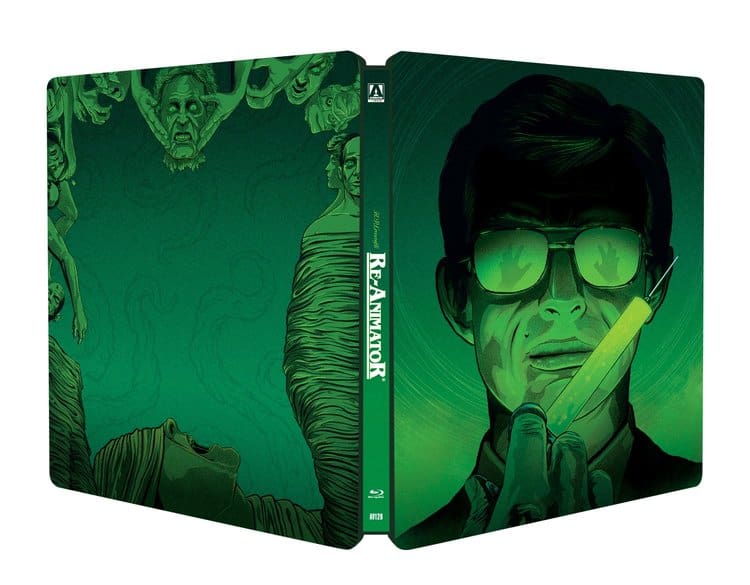
‘Re-Animator’ Steelbook artwork by Matt Griffin
You tend to stay away from likenesses in your work – your figures are all mood and gesture. Is that due to likeness rights for something like an Arrow Video release or an artistic decision?
It’s probably just a lack of confidence. I do use likeness sometimes in Arrow Video work, but I am not a likeness artist. I prefer to get to the mood of it. But, I also worry about people saying ‘that looks nothing like such-and-such.’ If I was advising a new artist, I would say they should work on that the thing they think they’re weakest at. So I should heed my own advice.
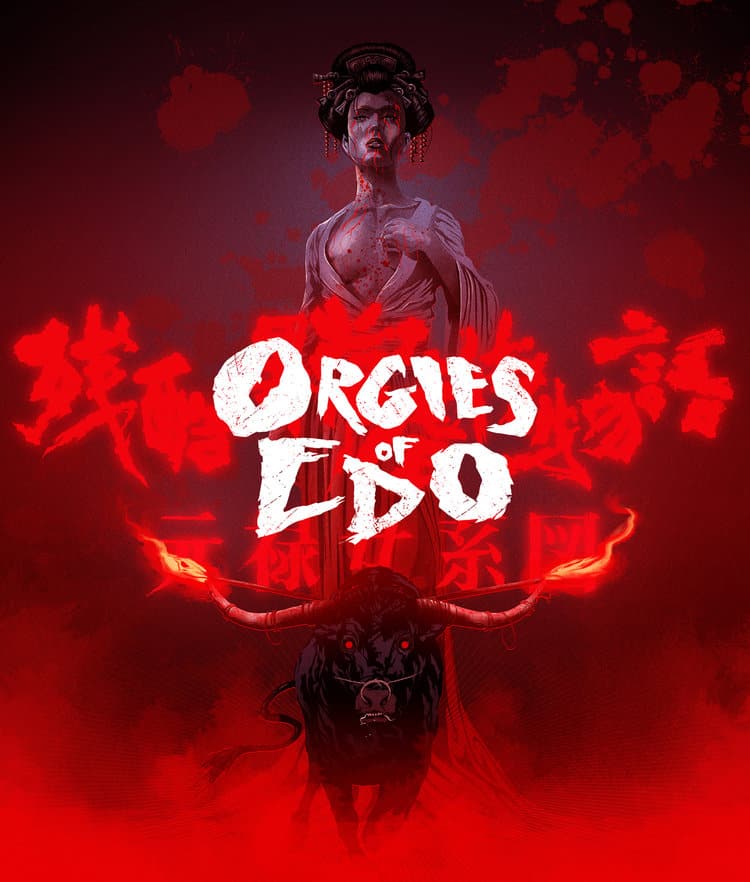
‘Orgies of Edo’ illustration for Arrow Video by Matt Griffin
You keep an online shop of giclee prints and have done a few limited edition screen prints with various outlets, but you’ve mostly kept away from that world. Talking to you about the poster world, I realized it’s only a tiny fraction of how an illustrator makes a living. It’s only as important as you make it. It is not the “end all be all” of a career in illustration. Is the collectibles market something you’re hoping to be a part of more, or is not a big goal for you?
There was a time when it was all I wanted. I thought it was the perfect place for me, but many things happened to steer me away from it a little. For one, I got busy on other commercial work. I also figured my priorities needed to be improving as a professional and building a healthy career to support my family. So rather than chase the pop-culture-collectible goal (which can be disheartening), I’ve busied myself on those two things. If a gallery or licensor commissions me, I’m all for it – I still love making posters. But I’m lucky in that most of my professional work is in-and-around those fields anyway.
There is another aspect and that is I did not (yet) master the art of creating for screen print. It’s a big hole in my CV, particularly when it comes to collectibles. I know there are separators who can prep the art for you, but I think you need expertise in the medium you’re working in. And if I am creating for a screen-print (which is far more desirable to the collectors and therefore commissioners) I should be able to do it myself. I will fix it, soon! This lack of knowledge also affected my confidence (much like the likenesses).
So for example last year a commissioner I’ve always wanted to work with gave me a shot. And it was a *perfect* property for me. Philosophical sci-fi. And I did the roughs, and he liked them, and I was all ready to go and then, I put it off. I got busy on other things, but I also bottled it. I let it go on too long and the opportunity was lost. I’m pretty determined not to let that happen again. But also, I’ll go where the wind blows me. Life’s too short to chase these things – better to focus on getting better and see what happens.
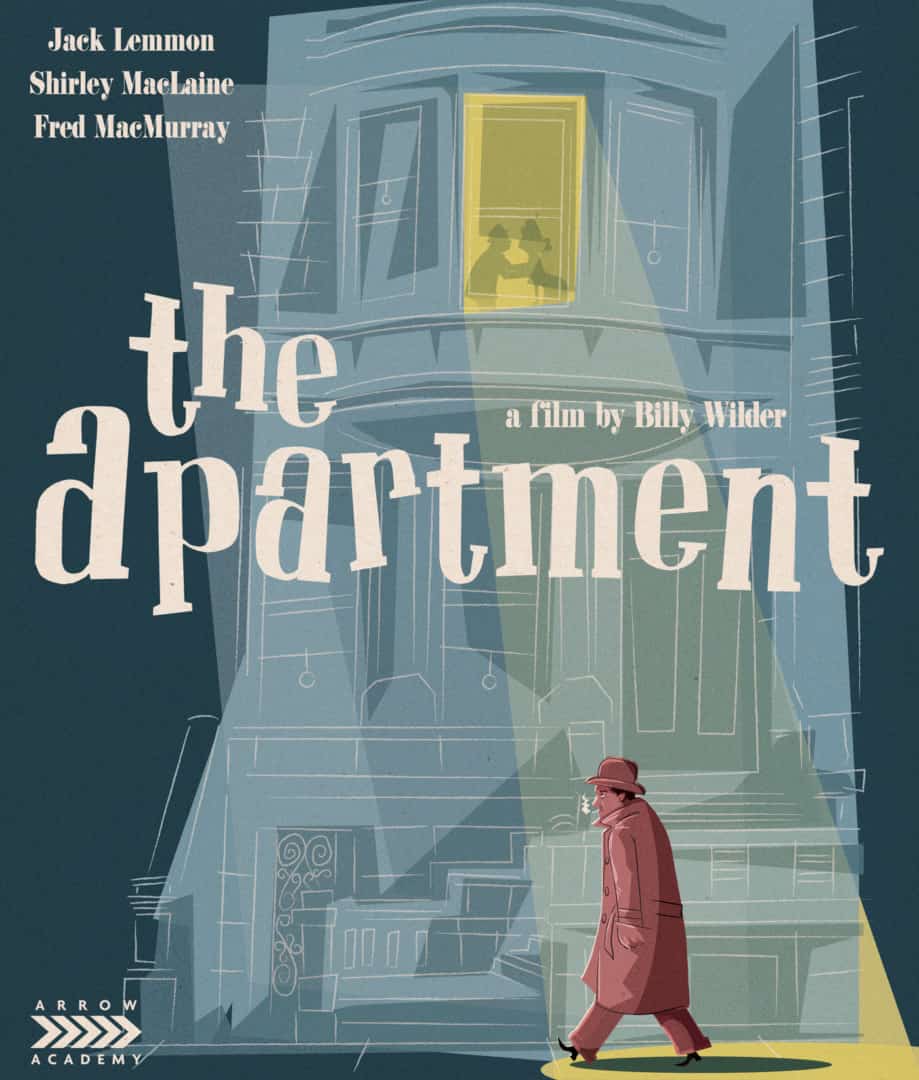
‘The Apartment’ key art illustration by Ignatius Fitzpatrick for Arrow Academy
Your work for the Arrow Academy release of Billy Wilder’s The Apartment is credited to your pseudonym Ignatius Fitzpatrick. Why not use your own name for that work?
It means I can do more cartoony, mid-century inspired work and not have it mixed in with my regular work.
Many people have questioned it over the years. I’ve been asked ‘what if Ignatius becomes more successful than you?’ – but what difference does that make! It’s still me and I’d still benefit. Other’s have told me there is no difference in the work but I can’t see that. Knowing me I’ll probably come up with another 10 pseudonyms and confuse people even further.

‘Dunes’ by Matty Griffin
O’Brien Press is an Ireland based company – how many other local businesses are you working with? Does living in Ireland affect your career much?
I don’t do a huge amount of work for Irish clients – not out of choice, just because it’s the way things worked out. About 75% in US, 20% UK, and the remainder is in Ireland. And that’s all thanks to the internet. It means I can live in the countryside, live the type of life I like to live and still work for foreign clients. The net ain’t perfect, but it gave me my career!
The Ayla Trilogy relies on Irish mythology, but I’m curious if you see Ireland and your heritage as a major part of your aesthetic?
Well, maybe not directly. But, I’ve always been fascinated by Irish mythology. And Ireland is a place where our history is right there, all around us. We are surrounded by very old things – reminders of our ancient past – and that’s a great environment for a fertile imagination. And because our history and mythology (and all its magic) are on our doorstep, it has meant I’ve given a lot of thought to the boundaries between magic and reality. I’m not saying I necessarily believe in spells and fairy-folk, but I’ve always loved the thought that it’s there, bubbling under the surface. That maybe we’ve just lost touch with it. So my books were all about that, and I think that’s why I love the mysterious side of sci-fi and horror – the idea that our reality might not be all there is. I also love physics for the same reason – read about anything quantum-related and you’ll see real magic! As for the aesthetic, well, my work is not all adorned with Celtic knots but it has all been influenced by the above. So maybe it hasn’t affected it visually, but it’s all made because I grew up here. I’m not sure that makes any sense.

Background concepts created for the new Cartoon Network series Transformers: Cyberverse

Background concepts created for the new Cartoon Network series Transformers: Cyberverse
Outside of your own freelance work, you started Voidonauts, a creative studio based close to where you live. What’s the goal with the new studio? How many other artists are working with you? What’s the goal with the new studio?
Yes I started that last year as a kind of response to the booming film industry in the region where I live. Limerick City is just half an hour away, and they recently built a huge state-of-the-art studio there (Troy Studios – where they shot Nightflyers). With Star Wars filming here, our animation industry going from strength to strength and the entertainment production industry generally thriving, I had a notion to join the fun. I spoke to a couple of people in the know, and floated the idea of starting a new creative studio – one that specialised in both marketing and development. I was told I had to go for it as the timing was so good. So, I went for it and set up Voidonauts!
For the marketing/services side, I knew there were film-marketing companies here, but I couldn’t see one that specialised in the graphic art side of it. For the development, I’ve been involved on the fringes of IP creation for a few years and, being a story-teller, have always had ambitions to create concepts for film and tv, so I thought I could take the skills I have, and the contacts I’ve made and see what happens. And that is the thing – there are no other artists! Not yet. And there is no other studio close to my house – it’s based in my own studio (which is close to my house)! For now…
The hope is to build enough business in order to hire new talent and really make a thriving studio. But for now, it’s just me, working like a maniac. It’s been a good start from a reputation-building point of view. The first gig was The Newport Beach Film Festival, where the Voidonauts logo will be shown before every screening. That work also picked up a couple of American Advertising Awards for my client. The next was a poster for a huge (and brilliant) Irish horror movie (Lee Cronin’s The Hole in the Ground), which was named ‘Best of the Billboards’ in SciFiNow Magazine. Since then I’ve been working with a film company in Northern Ireland creating key art for a couple of their projects. So it’s had a good start. The main thing was to make sure I had nothing to lose. So I have not invested anything, I haven’t raised any capital. It’s just me and what I already have. So if it doesn’t work, it won’t really matter! But I hope it does, and I hope it results in an exciting company that hires great new talent, makes innovative work and maybe creates a few incredible properties too. We’ll see.
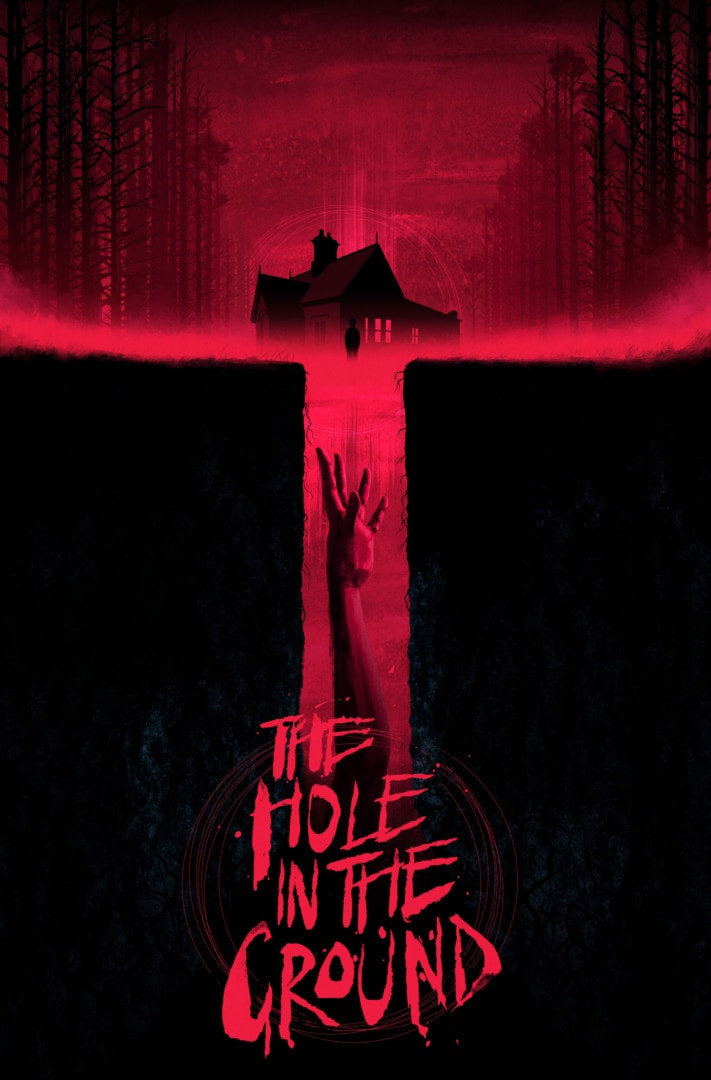
‘The Hole in the Ground’ illustration by Matt Griffin
What was your role with the Newport Beach Film Festival? Working for the festival directly, or independent clients?
That was for an independent US client called The Garage / Team Mazda. They approached me to do the work just a short while after I had set up Voidonauts, so it was a great opportunity to get the company name in front of the right people (the logo – hopefully – appeared on screen before every film). It also helped them win two silvers and a bronze in their local American Advertising Awards. And while I will definitely shout about that news from the rooftops, truthfully I can’t take a huge amount of credit. The concept was all theirs, I just drew the characters and made the background textures. But like I say, hopefully, some people at the festival saw the name and wondered ‘what the f*** is a Voidonaut?’
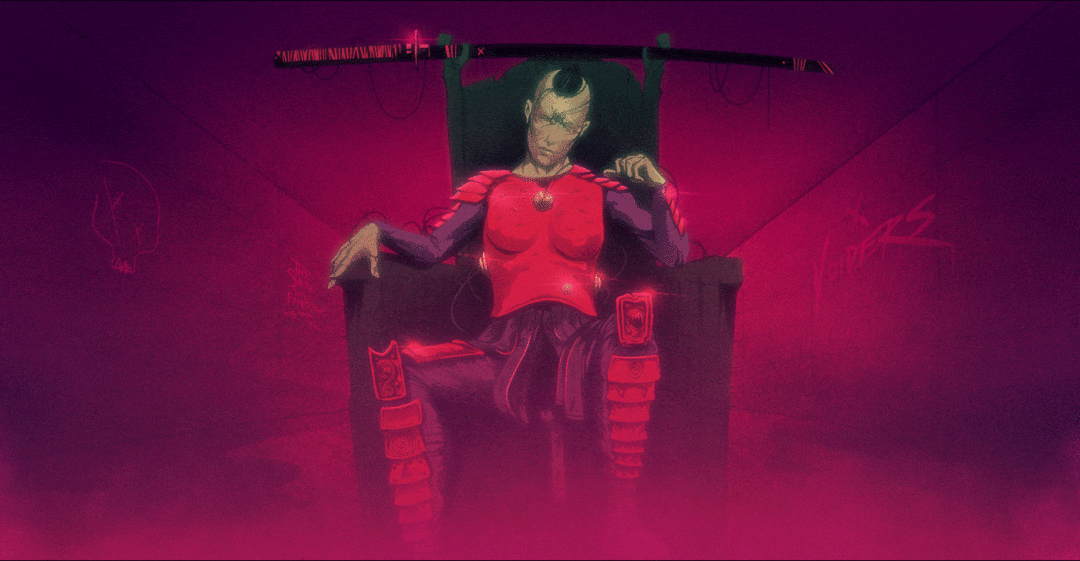
Illustration for ‘The Endling’ by Matt Griffin
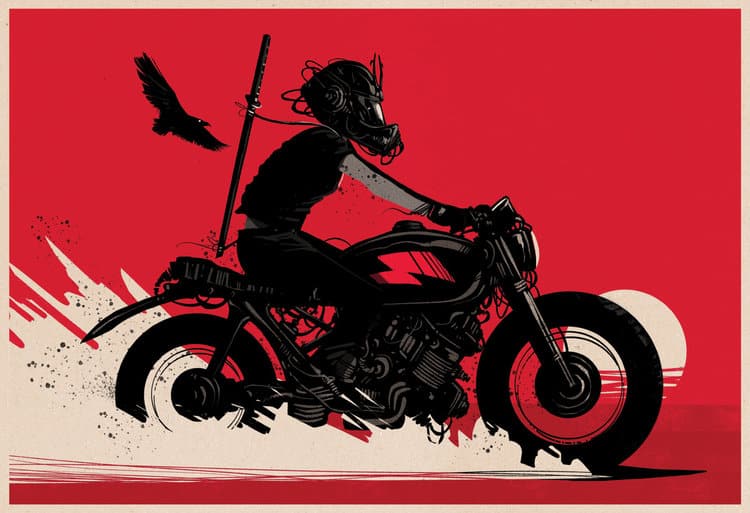
Illustration for ‘The Endling’ by Matt Griffin
Online you’ve shared images for your novel The Voidonaut and the graphic novel The Endling. Where are you with those projects?
Ah. The short answer is — they are shelved temporarily. The long answer:
There are many reasons why it’s temporarily shelved. For one thing, I wanted to base it in real theoretical physics. I am not a physicist, and I was never good at science as a kid, but I am fascinated by it, and I read stuff (that doesn’t seem to stick in my head) and I can at least mine it for a good story. So the research side is taking a long, long time (years, but only do it in fits, to be honest).
Also, the possibilities for it in terms of story are so vast – the nature of it (being about two people who can manipulate reality and ‘be’ the other ‘them’ in an infinite multiverse) means I can have any setting I like and so I am constantly dreaming up new strands to it. It also means I need to have the bones of an exciting plot mapped out across a huge, and multi-stranded, arc. I need that arc to be properly good. I felt I had the basis for a great story (and I had an end goal which is important!), but where I was going with it wasn’t great. It wasn’t new enough. When you’re playing in the multiverse sandbox you better make sure your concept has something new to bring, as it’s been done so many times before. I went down some paths that were just ‘ok’.
Last year I set up a Patreon for The Endling (the graphic novel strand. The Voidonaut is a novel, and they can be read in any order), thinking that if I had people paying their hard-earned money it would give me the motivation, and afford me the time, to finish that part of the story. About two chapters in I realised it just wasn’t good enough and I couldn’t devote as much time as I would have liked to it. So I got rid of the Patreon and stuck that script in a folder somewhere. I still want to do it, but I want it to be great. It has huge possibilities not just in terms of setting, but also medium — you could have strands delivered in books, graphic novels, animations, games — anything. And it can all tie in together. I’m in no massive rush. I can kind of treat it like my opus and might get it finished when I’m in my 80s. But I hope sooner.
Finally, I have another problem. And that is that I dream up ideas for new stories all the time! And I get very excited about them, and furiously scribble notes, telling myself ‘this is the one’. But because I’m not focusing on just one, none of them get done. I have an adult novel I really want to write called Ghost Music (mixing organised crime with the occult is the very simple way of putting it). I have a series idea called The Last Door of Talun (about the magical ‘underworld’ of Ireland having evolved at the same time as us, albeit separately, until a breach. So, looking at how magic might be magic-as-tech). Another YA book called Anything, Brother about two brothers dealing with the grief of losing a third, and their therapy which involves virtual reality (basically therapy through one person having the power of a God). And there’s more. An animated feature concept with a friend that’s been in development for years still on-going, and others I can’t think of.
I want to do it all. And therein lies the problem.
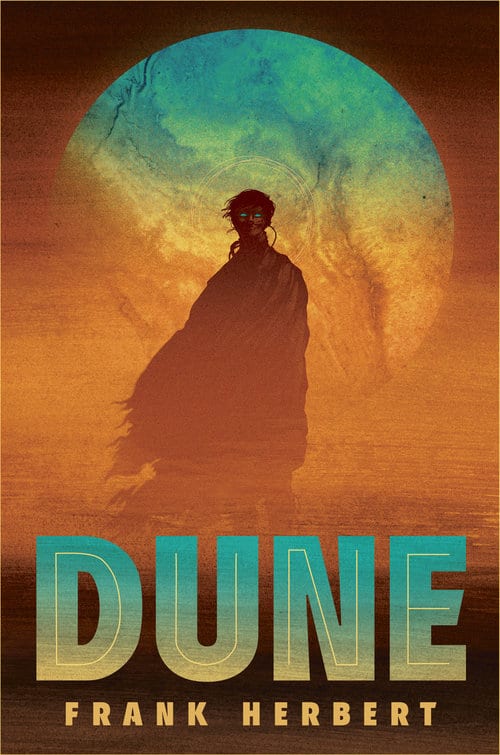
‘Dune’ cover illustration by Matt Griffin
With all of the stories you want to write just sitting there in your brain, how do you choose the order in which to do them? This is a struggle I have, and I have no good answer besides picking any one of them and moving forward. What’s your process?
However, I do have one project to focus on now as it’s not just me involved (which helps) and it’s something that’s been bubbling away for years. It’s a feature film concept based on a story we came up with a long time ago. Over the years it’s developed into something entirely new, and at the same time, my partner in the endeavour has also developed an amazing CV in the film-world. So it has a decent chance of happening, and it’s a story I’m passionate about. And, given his experience, I now have a road map to follow – another thing that helps. I think I need those boundaries set, and that guidance. Otherwise, my brain flits.
Are you pitching anything to O’Brien Press or other outlets?
I haven’t pitched any of them yet. My plan was to try to go via an agent for any new books, but in order to pique the agent’s interest (and the publishers) you need a good chunk of the manuscript finished – if not the whole thing. Hence 5 or 6 1000-word starts, but nothing more. You never know what will happen down the line though. I might get a burst of inspiration and some free time and make some headway on one or two of them. But I know from experience, it takes more than a burst of inspiration to write a book – it takes a lot of hard work. And in creating that work simply to pitch in hope, it takes time away from the jobs that put food on the table. With a family, I have to manage my priorities well.

‘Dune’ cover illustration by Matt Griffin
Will paying gigs always win out over personal projects?
I have long been singing from the rooftops about the importance of personal work in my profession. It’s absolutely paramount – nothing has opened more doors for me than personal work. Nearly every job I get cites a personal piece as the reason they are hiring me. So I’m contradicting myself in that I talked about priorities – earning money for my family against making time to express myself in personal work. But I guess a book is such a different animal to a drawing. It takes way more time – at least for me I can’t just snatch at it, I have to disappear into that world. Whereas I can take an hour or two and make an image that’s been floating in my head. And that hour or two is not wasted – it will invariably lead to paid work so every second is worth it.
My Dune book is the best example. I was messing around with ink, making textures. I had a brain fart and put a Paul Atredis figure in amongst this ink wash, and adjusted the colour. I put it out on social media for fun and people liked it. It got shared a lot. And an art director in Penguin, who I’ve worked with before on a few projects, saw it, just happened to have a new edition of Dune on his to-do list and now I have a special edition hardcover of one of my favourite books coming out. All on the back of personal work.
So it’s all about balance. Work hard and professionally to get the money in, work hard and expressively to create your own vision and improve technically in the process. One feeds the other. And balance all that elbow grease with plenty of downtime, exercise and walks in the forest.


